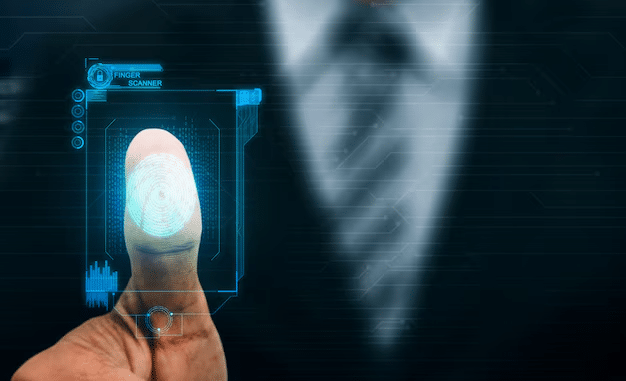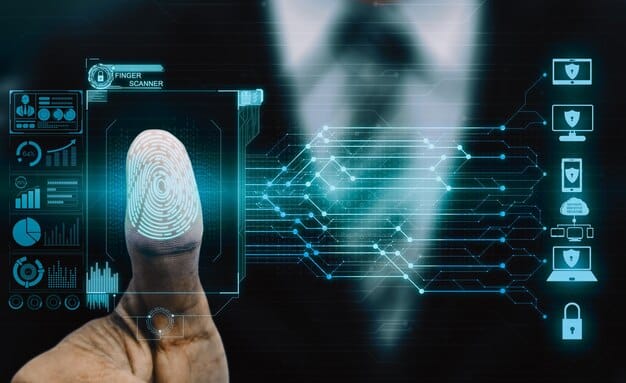Biometric technology has emerged as a pivotal tool in the field of security, offering a sophisticated and reliable way to verify identity and prevent unauthorized access to sensitive information, physical spaces, and digital systems. Unlike traditional methods such as passwords or PINs, biometric systems use unique biological characteristics—such as fingerprints, facial recognition, iris patterns, and voice recognition— to authenticate individuals. This article explores the various roles of biometric technology in enhancing security across different sectors and its impact on both personal and organizational safety.
What is Biometric Technology?

Biometric technology refers to the use of unique physiological or behavioral characteristics of individuals for identification and authentication purposes. These characteristics are distinctive to each person and are difficult to replicate or forge, making them ideal for security applications. Common biometric modalities include:
- Fingerprint Recognition: Scanning and comparing an individual’s fingerprint to a database of registered prints.
- Facial Recognition: Analyzing facial features such as the distance between eyes, nose, and mouth for identification.
- Iris and Retina Scanning: Capturing the unique patterns in the eye for verification.
- Voice Recognition: Using voice patterns and speech features to authenticate identity.
- Behavioral Biometrics: Monitoring patterns like typing speed or gait to authenticate users.
How Biometric Technology Enhances Security
1. Strengthening Authentication Systems
Traditional security methods, like passwords or PINs, are vulnerable to being stolen, guessed, or forgotten. Biometrics, on the other hand, offer a more secure and reliable form of authentication. Since biometric traits are inherently unique to each individual, they are difficult to replicate, reducing the risk of unauthorized access. Many devices, such as smartphones, laptops, and banking applications, now use fingerprint or facial recognition as an additional layer of security, ensuring that only the rightful user can access sensitive information.
2. Reducing Fraud and Identity Theft
Biometric technology plays a critical role in reducing fraud and identity theft by offering a more reliable method of identity verification than traditional methods. In financial services, for example, biometrics can be used to confirm the identity of account holders before performing high-risk transactions, such as transferring large sums of money or accessing private accounts. Similarly, biometric authentication is increasingly being used in healthcare to ensure that patient records are only accessible by authorized individuals, reducing the risk of identity theft and fraud.
3. Enhancing Physical Security
Biometric technology is increasingly being used to enhance physical security by controlling access to restricted areas. This is particularly useful in high-security environments such as government buildings, research facilities, data centers, and airports. Biometric access control systems allow only authorized personnel to enter secure spaces, improving safety and minimizing the risk of unauthorized individuals gaining access. For instance, facial recognition and iris scanning systems are now commonly used at airports to speed up the process of identity verification while ensuring a high level of security.
4. Facilitating Border and Immigration Control
Biometrics is revolutionizing the way countries manage border security and immigration control. Automated biometric systems enable governments to identify travelers using facial recognition or fingerprint scanning at immigration checkpoints, reducing wait times and increasing efficiency. These systems also enhance security by providing a more accurate and tamper-proof method of tracking individuals entering and leaving a country, which is particularly important for national security and anti-terrorism efforts. Biometric passports and visas are also being implemented globally to streamline travel and prevent fraud.
5. Securing Financial Transactions
Biometric authentication is increasingly being used to secure financial transactions, providing an additional layer of protection against fraud. For example, some banks and financial institutions now use biometric data for online banking, allowing customers to perform transactions through fingerprint or facial recognition rather than relying on passwords or PINs. This not only enhances security but also improves user experience by making the process faster and more convenient.
6. Improving Employee Access and Monitoring
In organizational settings, biometric technology can be used to manage employee access and monitor attendance. Companies use fingerprint scanning or facial recognition systems to ensure that employees access secure areas only with proper authorization. Biometric time and attendance systems also eliminate the risk of “buddy punching”—when one employee clocks in or out for another—thereby improving payroll accuracy and reducing time theft.
7. Enabling Contactless and Hygienic Security
In light of the COVID-19 pandemic, contactless biometric systems have gained popularity for enhancing security while maintaining hygiene. Facial recognition, voice recognition, and iris scanning are all non-contact forms of authentication that reduce the risk of spreading germs and viruses. This makes biometric technology especially relevant in public spaces such as airports, hospitals, and offices where minimizing physical contact is critical to health and safety.
Challenges of Biometric Technology in Security
1. Privacy Concerns
One of the most significant concerns regarding biometric technology is the issue of privacy. Since biometric data is inherently personal and cannot be changed (unlike passwords or PINs), there are concerns about how this data is collected, stored, and used. If biometric data is hacked or misused, it could lead to serious privacy violations. Therefore, it is crucial to implement strong encryption and data protection protocols to ensure the safety of biometric information.
2. False Positives and False Negatives
Although biometric systems are highly accurate, they are not infallible. There is always the possibility of false positives (incorrectly identifying someone as an authorized user) and false negatives (failing to recognize a legitimate user). This can lead to security breaches or user frustration. Continued advancements in biometric technology aim to reduce these errors, but they remain a challenge for widespread adoption.
3. High Implementation Costs
Implementing biometric systems can be costly, particularly for organizations with large workforces or high volumes of users. The technology requires specialized hardware (such as fingerprint scanners or cameras) and software, as well as ongoing maintenance and updates. While the costs of biometric systems are decreasing, initial investments can still be a barrier for small and medium-sized businesses looking to adopt this technology.
4. Accessibility and Inclusivity Issues
Not everyone has the same biometric traits, which can create challenges in ensuring inclusivity and accessibility. For example, individuals with disabilities or certain medical conditions may have difficulty using biometric systems like fingerprint or facial recognition. It’s important for organizations to offer alternative security measures to accommodate all users, ensuring that biometric systems are used in an equitable and inclusive manner.
The Future of Biometric Technology in Security
As biometric technology continues to evolve, its role in enhancing security will only expand. Advancements in AI and machine learning are likely to improve the accuracy and efficiency of biometric systems, making them even more reliable for security applications. Additionally, as the technology becomes more affordable, it is expected that biometric security solutions will become mainstream across industries, from personal devices to government and corporate security.
Conclusion
Biometric technology plays an integral role in enhancing security across various sectors, from personal devices to national borders. By offering a more reliable and convenient means of authentication, biometric systems provide a high level of security that traditional methods, such as passwords and PINs, cannot match. While challenges such as privacy concerns, false recognition, and high implementation costs remain, the future of biometrics in security looks promising. As technology continues to evolve, biometric systems will become more accessible, accurate, and integral to modern security strategies.
FAQs
Q1: Are biometric systems completely foolproof?
No, while biometric systems are highly accurate, they are not foolproof. There is always a risk of false positives or false negatives, where a legitimate user may be denied access or an unauthorized individual is mistakenly granted access.
Q2: What types of biometric authentication are commonly used?
Common types of biometric authentication include fingerprint scanning, facial recognition, iris or retina scanning, voice recognition, and behavioral biometrics (such as typing patterns or gait recognition).
Q3: Can biometric data be stolen or hacked?
While biometric data is considered more secure than traditional methods like passwords, it is still susceptible to hacking if not properly secured. It’s crucial to use strong encryption and data protection measures to safeguard biometric data from cybercriminals.
Q4: How does biometric technology enhance airport security?
Biometric technology is used in airports for faster and more secure identification of travelers. Systems like facial recognition and fingerprint scanning allow passengers to quickly pass through security checkpoints and boarding gates without the need for traditional identification documents.
Q5: Is biometric technology used in healthcare security?
Yes, biometric technology is increasingly used in healthcare to protect patient information and ensure that only authorized personnel have access to medical records. It can also be used for patient identification, reducing the risk of medical errors and fraud.


